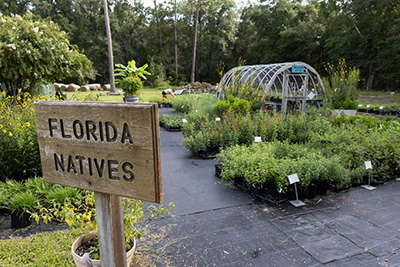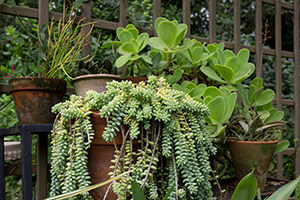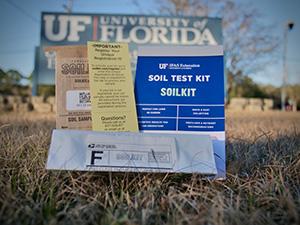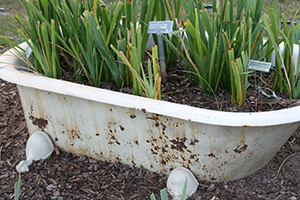Ten Ways to Save Time and Money in the Landscape
Some people might be overwhelmed by the prospect of designing their landscape, with concerns about the time and money it will require. But there are many strategies you can use to create a low-care, low-cost landscape.

Below are ten techniques to simplify your landscape and make your garden more efficient. These methods can decrease the amount of time required for maintenance and reduce the need for water, energy and chemicals.
Choose plants appropriate for the local conditions: Selecting Florida-Friendly plants or native plants is a great way to retrofit your landscape for Florida’s climate. Many of these plants are drought tolerant and require less water. You can also save yourself the hassle of treating for damaging insects by purchasing pest-resistant plants. It’s a good idea to get familiar with the USDA Hardiness Zones and choose plants whose cold tolerance rating falls in your zone.

Choose plants for their foliage, not their flowers: Flowers can require frequent maintenance such as with deadheading, and often only bloom during certain times of the year. Attractive foliage that has interesting colors and shapes can be just as appealing as flowers. Some plants have variegated options with stripes or even bright splashes of red, yellow or orange.
Use large plants that spread: A few large, spreading plants are easier to care for than a bunch of smaller plants of various species. Good examples include those that are arching, cascading or vase-shaped. Low-growing plants that form mounds can cover large plant beds. Groundcovers can be used in place of smaller bedding plants. Perennials, once matured, are great low-maintenance options.
Choose evergreen plants: Evergreen plants maintain their foliage and color year-round, which provides continued enjoyment throughout the seasons. Many also require very little trimming because of their neat growth habit. Some evergreens have needle-like foliage that does not shed very much, but when it does, the litter can be used as mulch.
Choose “tidy” plants: Some plants grow in a tight, clean form that does not require consistent pruning. This can greatly reduce your time with the shears. Many landscape plants require some pruning in order to thrive, but choosing plants that naturally form the shape you want can limit how often you need to trim.

Match your soil with the right plants: Make sure you’re planting species that naturally thrive in your yard’s soil type. You can conduct a soil test that is available through your local UF/IFAS Extension office. You can also add nutrients to the soil with compost. Using mulch can help keep the soil moist and insulated.
Group similar plants together and choose fewer species: Streamline your plant-care process by placing species with similar water and soil requirements together in the landscape. Using a fewer number of species (10-15 different types) and planting them in bunches throughout the yard will simplify the maintenance routine.
Slightly crowd plants together: Traditionally, it’s recommended to space plants so that at maturity they are touching. But if you space the plants so that they touch sooner than this, you can keep weeds down and reduce irrigation needs. The shade from the dense foliage prevents moisture evaporation from the soil and keeps weeds at bay due to the lack of sun.

Reuse and repurpose materials: Getting creative with materials that you already have can reduce costs in the garden. Vintage buckets, old garden gates, wheelbarrows, etc. can be repurposed. Shopping at reuse stores for outdoor furniture or plant containers can save additional money.
Use garden ornaments and plant containers: Garden ornaments add appeal, color and creative design to your garden with minimal maintenance. Bird houses and bird feeders provide color and invite wildlife, while trellises add texture. Plant containers can also provide pattern and color, and tend to require less maintenance than plants in the ground.
For more ideas on saving time and money in your landscape, contact your county UF/IFAS Extension office.
